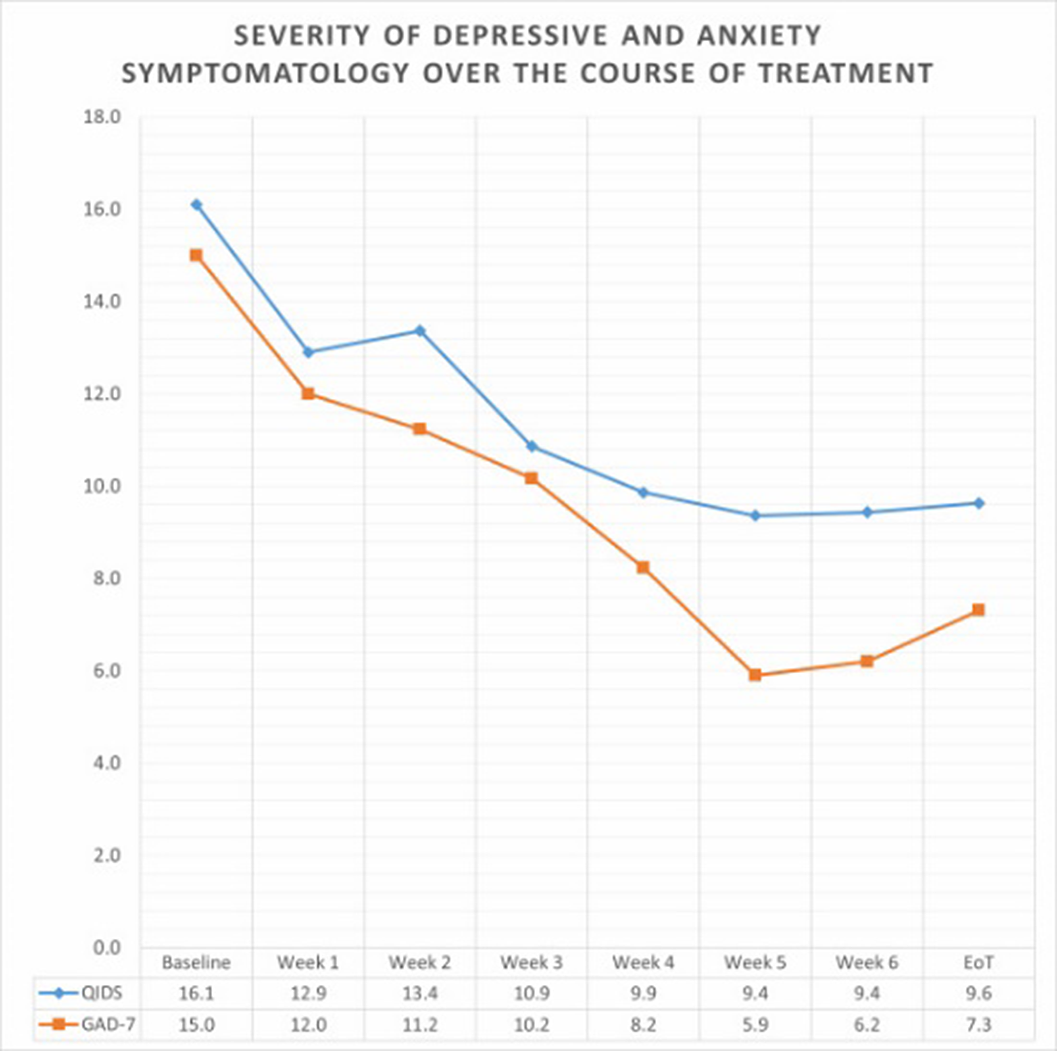No CrossRef data available.
Published online by Cambridge University Press: 19 July 2023
Repetitive Transcranial Magnetic Stimulation (rTMS) is a new emerging neuromodulation treatment that has been tried for multiple psychiatric conditions [1, 2]. Its major approved application is treatment-resistant depression (TRD) [1]. At the same time there is a perceived potential for its use for other clinical conditions, primarily other mood and anxiety disorders [2]. At Homewood Health Centre we have been using rTMS as an adjunct treatment for patients with TRD and multiple comorbidities.
To evaluate the effectiveness and feasibility of rTMS in complex clinical populations.
Observational study. Quick Inventory of Depressive Symptomatology (QIDS). Generalized Anxiety Disorder Questionnaire (GAD-7). Descriptive statistics.
We have treated 30 patients, 12 women (40%) and 18 men (60%), with average age of 42.0±15.6 years. All patients had a primary diagnosis of major depressive disorder. The standard questionnaires were used to quantify the severity of depressive symptoms (QIDS) and anxiety (GAD-7). The average baseline scores for depression and anxiety were 16.1±4.9 and 15.0±4.4, respectively. The patients received an average of 28.1±5.1 treatments. All patients but one received the full course of treatment as planned. The average end-of-treatment (EoT) scores for severity of depressive symptoms and anxiety were 9.6±6.5 and 7.3±5.3, respectively. The rates of improvement and remission for depressive symptoms were 66.7% and 36.7%, respectively. The rates of improvement and remission for anxiety symptoms were 76.9% and 30.8%, respectively.
Image:

Our data indicate that rTMS provides significant improvement and recovery rates in complex clinical populations and is well-tolerated. While further research is required, we recommend wider implementation of rTMS for treatment of mood and anxiety disorders.
1. Brunoni AR, Chaimani A, Moffa AH, Razza LB, Gattaz WF, Daskalakis ZJ, Carvalho AF: Repetitive Transcranial Magnetic Stimulation for the Acute Treatment of Major Depressive Episodes. JAMA Psychiatry 2017, 74(2):143.
2. Somani A, Kar SK: Efficacy of repetitive transcranial magnetic stimulation in treatment-resistant depression: the evidence thus far. Gen Psychiatr 2019, 32(4):e100074.
None Declared
Comments
No Comments have been published for this article.